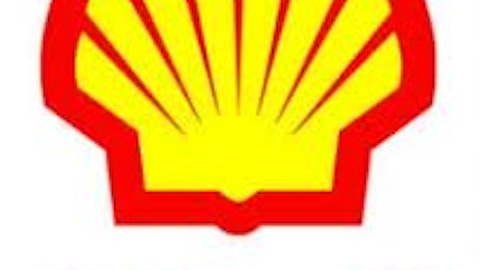In the past couple of weeks, the price of oil has slowly recovered from a downward trend that occurred during April. Will the price break the $100 threshold in the near future? How will the recent developments in the oil market affect leading oil producers? Let’s examine the recent changes in the oil market and try to determine what’s up ahead for oil.
During May (up to date), the price of oil rose by almost 3%. Moreover, since the beginning of the year, the price of oil increased by 4.7%. The United States Oil Fund LP (ETF) (NYSEARCA:USO) also rallied during the last month, rising by 3%; and since the beginning of the year, United States Oil (NYSEMKT:USO) rose by 2.9%. It follows the price of oil (West Texas Intermediate, or WTI).
This ETF’s net assets total roughly $821 million as of May 7. According to the ETF’s prospectus (opens pdf), the USO’s net assets consist mainly of: “..investments in future contracts of sweet crude oil, other types of crude oil, diesel-heating oil, gasoline, natural gas, and other petroleum-based fuels that are traded on the NYMEX, ICE Futures Exchange or other U.S. and foreign exchanges.”
More specifically, as of May 7, the ETF mostly holds June contracts of WTI crude oil on the NYMEX and ICE markets. Therefore, this is a good way of tracking the movement in crude oil’s price.
The recent recovery in the price of oil may have helped strengthen leading oil stocks such as Chevron Corporation (NYSE:CVX); shares of the company rallied during May by nearly 1%. Let’s turn to examine the latest changes in the oil market.
Storage
During April, the U.S. Petroleum and oil stockpiles rose by 18.9 million barrels; they reached 1.8 billion barrels by April 26. Current crude oil stockpiles are 26.6 million barrels higher than the storage recorded during the same week last year. The rise in storage suggests the oil market is loosening up, which may pull down oil prices. Moreover, the linear correlation between the changes in stockpiles and oil prices is mid-strong and negative at -0.2. This correlation suggests if oil stockpiles rise further, oil prices may dwindle.

Supply
From the supply side, OPEC left its production pace nearly unchanged at around 30.1 million bbl/d. Moreover, the IEA projects that the oil production of non-OPEC countries will increase by 1.1 million bbl/d (y-o-y) in 2013. This means the global oil supply is expected to rise, which should ease oil prices.
Based on the latest EIA report, U.S oil imports slipped during April by nearly 0.2%; as of April 26 it was 11.5% lower than the same week last year. Conversely, oil production in the U.S rose by 1.5% during last month. It was also 19.4% higher than the same week in 2012.
Refinery inputs rose 1.7% during the month. The rise in production and refinery inputs could help pressure oil prices lower in the coming weeks.
In addition to Chevron Corporation (NYSE:CVX), the recent rise in oil prices may have pulled up shares of other leading oil companies, including Royal Dutch Shell plc (ADR) (NYSE:RDS.A). More specially, during the past month, shares of Chevron Corporation (NYSE:CVX) rallied by 4.9%. In comparison, during the same time frame, the S&P 500 index rose by 4.1%.
Despite the recent rally in oil prices, the average price in the first quarter of 2013 was 8.3% lower than the same quarter in 2012. The sharp fall oil prices in Q1 2013 may have been among the key factors for the drop in the revenue at these leading oil producers.
Chevron Corporation (NYSE:CVX)’s revenue fell in the first quarter of 2013 by 6.4% (y-o-y). Its oil production declined by 1.9% as it reached approximately 1.7 million bbl/d, compared to 1.8 million bbl/d in the year ago period. Further, the company’s refinery input tumbled by 18.2% in the recent quarter. The drop in refinery input was from the U.S segment, which fell by 38%. The slowdown in production and refinery input pulled down the company’s revenue. If this trend continues, Chevron Corporation (NYSE:CVX)’s revenue will fall further.
Shares of Royal Dutch Shell plc (ADR) (NYSE:RDS.A) rose by 7.2% in the past month. But Shell’s revenue also declined during the past quarter, falling by 5.9%. One of the reasons for the drop in revenue was the 7% drop in the realized price of oil during the quarter (y-o-y).
In terms of production, the company’s upstream oil production declined by nearly 2% (y-o-y). On the other hand, its downstream refinery input rose by 4%; Shell’s oil production increased slightly by 1% compared to the same quarter in 2012. Shell, much like Chevron Corporation (NYSE:CVX), suffered from the decline in oil prices.
Demand
From the demand side, the U.S economy is showing signs of slowdown. The manufacturing PMI slipped again to 50.7, which means manufacturing sectors in the U.S are still growing, but at a slower pace. China’s April manufacturing PMI also declined, dropping to 50.6. If growth in these leading countries’ manufacturing sectors slows further, it could indicate a slowdown in growth for oil consumption. Furthermore, based on the recent IEA report, global demand in the first quarter of 2013 was lower than expected. If this trend continues, oil prices may come down.
The bottom line
Based on the above, my guess is that oil prices will slowly decline in the near future. This will lead to lower profit margins and no revenue growth for leading oil producers.
The article Will Oil Break the $100 Mark? originally appeared on Fool.com and is written by Lior Cohen.
Copyright © 1995 – 2013 The Motley Fool, LLC. All rights reserved. The Motley Fool has a disclosure policy.


